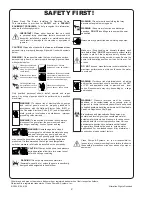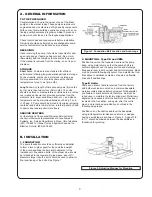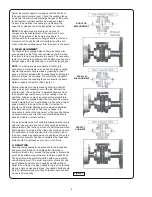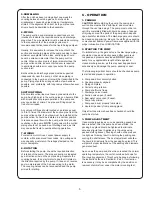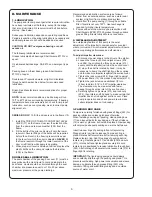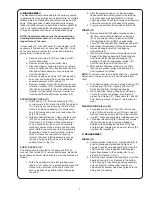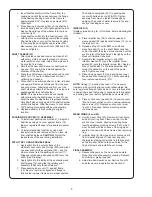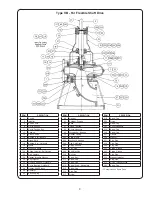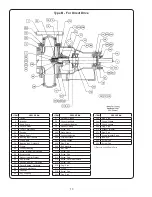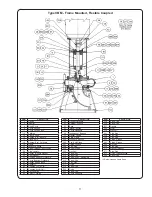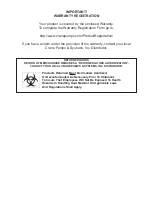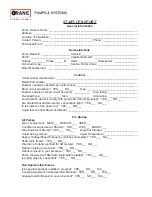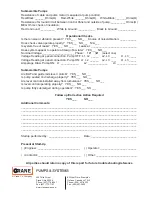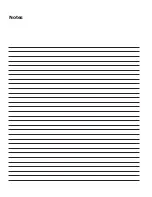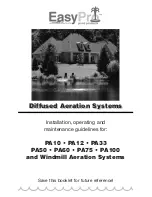
4
Adjust the metal supports or wedges until the shafts of
the pump and driver are level. Check the coupling faces,
as well as the suction and discharge
fl
anges of the pump
for horizontal or vertical position by means of a level.
Correct the positions, if necessary, by adjusting the
supports or wedges under the baseplate, as required.
NOTE:
A
fl
exible coupling should not be used to
compensate for misalignment of the pump and driver
shafts. The purpose of the
fl
exible coupling is to
compensate for temperature changes and to permit end
movement of the shafts without interference with each
other, while transmitting power from the driver to the pump.
3. FIELD ALIGNMENT
The faces of the coupling halves should be spaced far
enough apart so that they cannot strike each other when
the driver rotor is moved toward the pump. The necessary
tools for checking the alignment of a
fl
exible coupling are a
straight edge and a taper gauge or a set of feeler gauges.
NOTE:
In most cases where extreme
accuracy is
necessary, a dial indicator may be used to align coupling.
Angular alignment check is made by inserting a taper
gauge or feelers between the coupling faces at 90-degree
intervals around the coupling. The unit will be in angular
alignment when the coupling faces are exactly the same
distance apart at all points. (See Figure 3).
Parallel alignment check is made by placing a straight
edge across both coupling rims at the top, bottom and
at both sides. The unit will be in parallel alignment when
the straight edge rests evenly on the coupling rim at all
positions. Allowance may be necessary for temperature
changes and for coupling halves that are not of the same
outside diameter. Care must be taken to have the straight
edge parallel to the axis of the shafts. Correction for
Angular and Parallel Misalignment is made by adjusting
the shims under the driver. After each change, it is
necessary to recheck the alignment of the coupling halves,
as adjustment in one direction may disturb adjustments
already made in another direction.
The permissible amount of coupling misalignment will vary
with the type of pump and driver, but should be limited to
approximately .002 inches per inch of shaft diameter when
fi
nal adjustment is made. When the units are lined up cold,
it is necessary to make allowance for the vertical rise of
the driver caused by heating when in operation. When the
preliminary alignment has been completed the foundation,
bolts should be tightened evenly, but not too
fi
rmly.
4. GROUTING
Grouting compensates for unevenness in the foundation
and prevents vibration and shifting after mounting is
complete. Build a form around the baseplate to contain the
grout, and sprinkle area with water to obtain a good bond.
The base should be completely
fi
lled with a good quality,
non-shrinking grout. The usual mixture for grouting is one
part Portland cement and two parts sand with su
fi
cient
water to
fl
ow freely. It is also desirable to grout the leveling
pieces, shims or wedges in place. Foundation bolts should
be fully tightened when grout has hardened, usually about
48 hours after pouring.
Figure 3
PERFECT
ALIGMENT
PARALLEL
MISALIGNMENT
ANGULAR
MISALIGNMENT
Summary of Contents for Weinman B Series
Page 16: ...Notes ...


